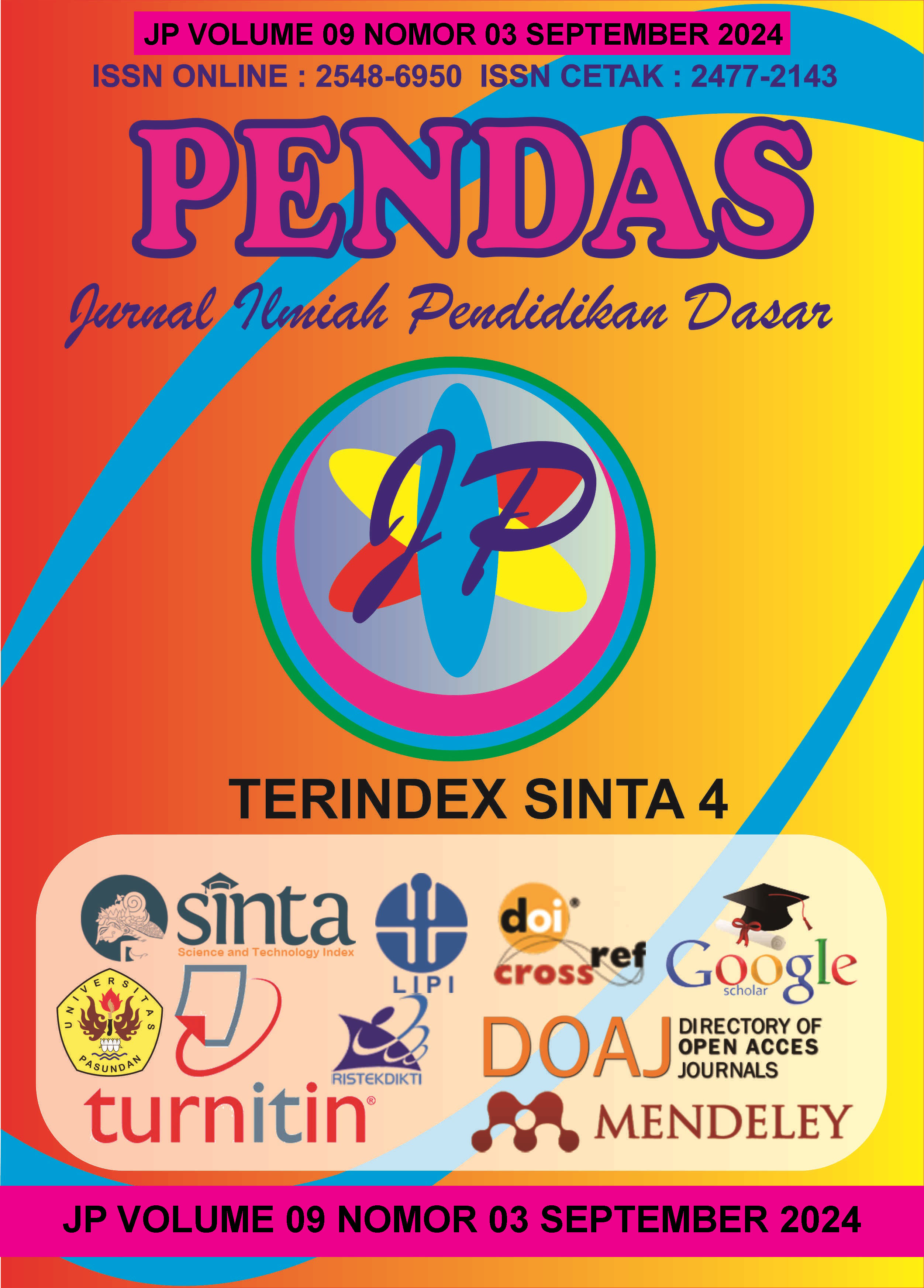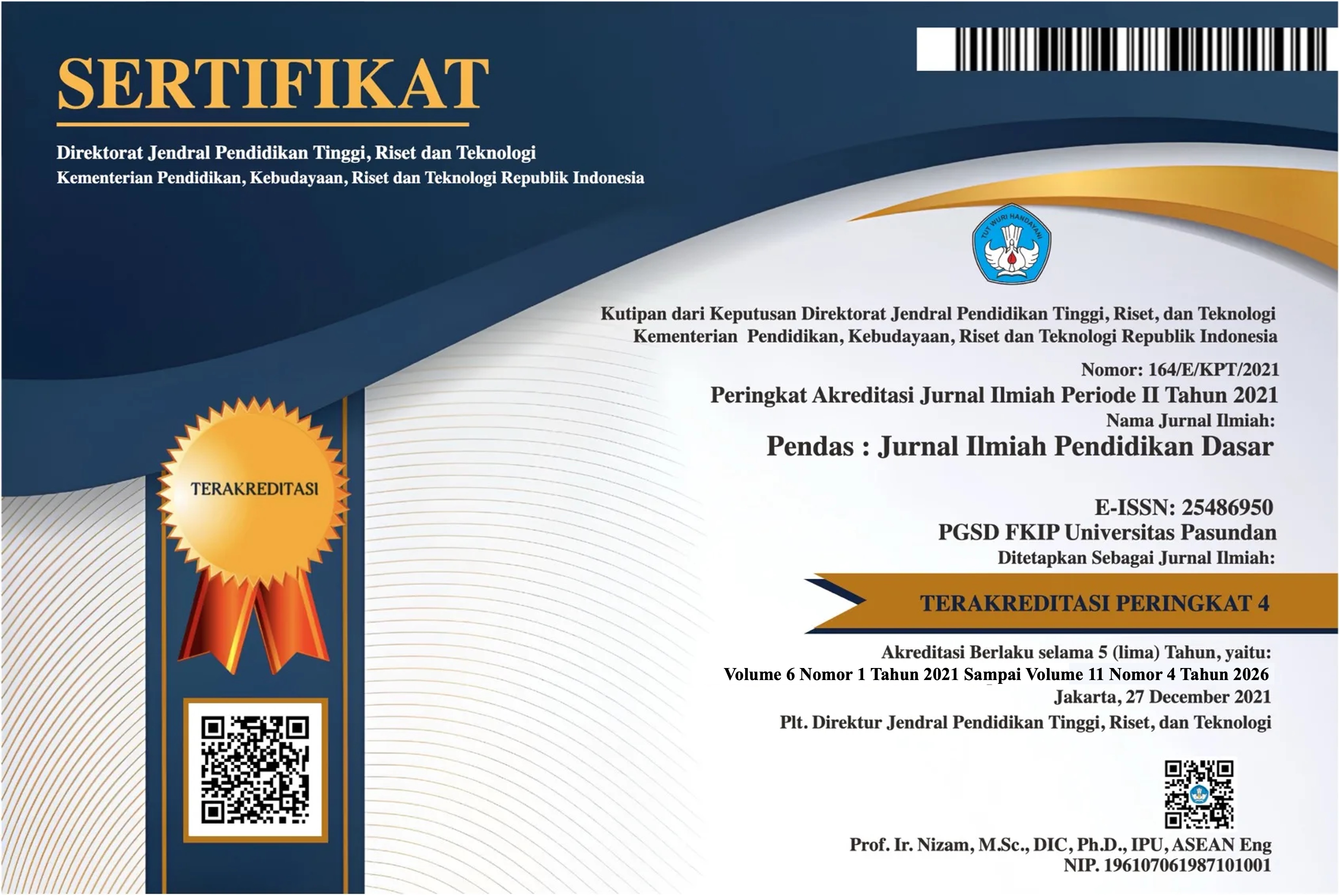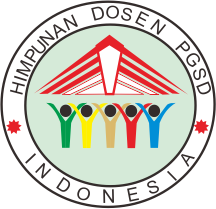ECENG GONDOK SEBAGAI MEDIA EDUKATIF DALAM PEMBELAJARAN MUATAN LOKAL DI SEKOLAH DASAR
DOI:
https://doi.org/10.23969/jp.v9i3.15813Keywords:
educational media, elementary school, local content, water hyacinthAbstract
Education is the main foundation in shaping the character and abilities of the younger generation. In Indonesia, the education curriculum continues to be adapted to current developments and local needs, including the introduction and preservation of local culture and wisdom through local content in elementary schools. Water hyacinth (Eichornia crassipes), although often considered a weed, has great potential as an educational medium. This research uses a qualitative approach with descriptive methods to explore the use of water hyacinth as an educational medium in local content learning at Krian 2 State Elementary School. Through data collection techniques in the form of in-depth interviews, direct observation, and documentation, this research reveals that the use of water hyacinth as a material teaching successfully increases student engagement, environmental understanding, as well as practical skills and creativity. Students are involved in the process of collecting, processing and utilizing water hyacinth to make various craft products, which not only provides practical experience but also increases their environmental awareness. The results of the research show that the use of water hyacinth in local content learning has a positive impact on students' understanding of local wisdom and environmental conservation. Students learn the values of hard work, perseverance, responsibility, and cooperation through water hyacinth-based activities. This implementation is also relevant to the local content curriculum and can support community economic empowerment through the introduction of the concept of entrepreneurship. The conclusion of this research shows that water hyacinth has great potential as an educational medium, providing broad educational benefits, as well as forming students' characters who care about the environment and have an entrepreneurial spirit. Recommendations for further development include training and support for teachers, collaboration with local communities, and ongoing evaluation to ensure the success and sustainability of using water hyacinth as an educational medium.
Downloads
References
Febriati, Y., Sholahuddin, A., & Ajizah, A. (2021). Pengembangan modul IPA SMP berbasis literasi sains dengan kearifan lokal pada materi proses dan produk teknologi ramah lingkungan. Jurnal Pendidikan Sains dan Terapan, 1(1), 64-76.
Gerbono, I. A., & Djarijah, I. A. S. (2005). Teknologi Tepat Guna Kerajinan Enceng Gondok. Kanisius.
Lahaji, H., Muhibbuddin, M., Wantu, H. M., & Ilma, N. (2023). Pemberdayaan masyarakat muslim pesisir Danau Limboto terhadap pemanfaatan eceng gondok. Buku-Buku karya dosen IAIN Sultan Amai Gorontalo, 1(1).
Nainggolan, M. (2023). Analysis of Water Hyacinth Processing for Handicrafts by the Community in Samosir Regency: Analisis Pengolahan Eceng Gondok untuk Kerajinan Tangan oleh Masyarakat di Kab. Samosir. JPUS: Jurnal Pendidikan Untuk Semua, 7(1), 18-22.
Rorong, J. A., Sudiarso, S., Prasetya, B., Polii-Mandang, J., & Suryanto, E. (2012). Phytochemical analysis of eceng gondok (Eichhornia crassipessolms) of agricultural waste as biosensitizer for Ferri photoreduction. AGRIVITA, Journal of Agricultural Science, 34(2), 152-160.
Suratno, S., Swandari, F., & Yamin, M. (2015). Pengembangan Model Pembelajaran Berbasis Kearifan Lokal di Daerah Bantaran Sungai Barito. Jurnal Pendidikan Progresif, 5(2), 178-189.
Yuliani, E. L., Heri, V., Bakara, D. O., Sammy, J., & Ariesta, D. L. (2023). Keanekaragaman Hayati-Pengenalan Materi untuk Pengembangan Kurikulum Merdeka dan Muatan Lokal Sekolah Dasar dan Sekolah Menengah Pertama di Kabupaten Kapuas Hulu. CIFOR.
Downloads
Published
Issue
Section
License
Copyright (c) 2024 Pendas : Jurnal Ilmiah Pendidikan Dasar

This work is licensed under a Creative Commons Attribution 4.0 International License.



















